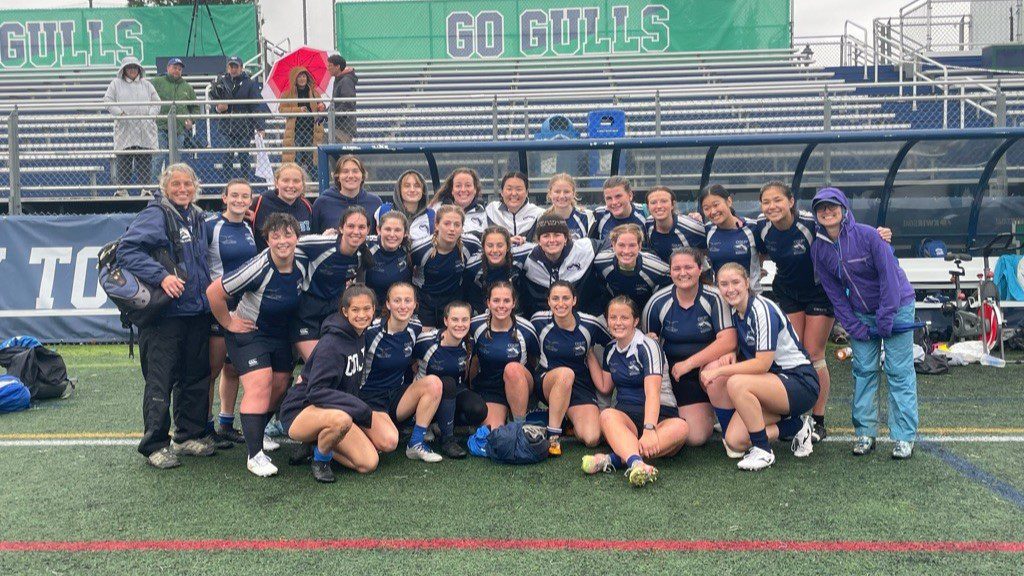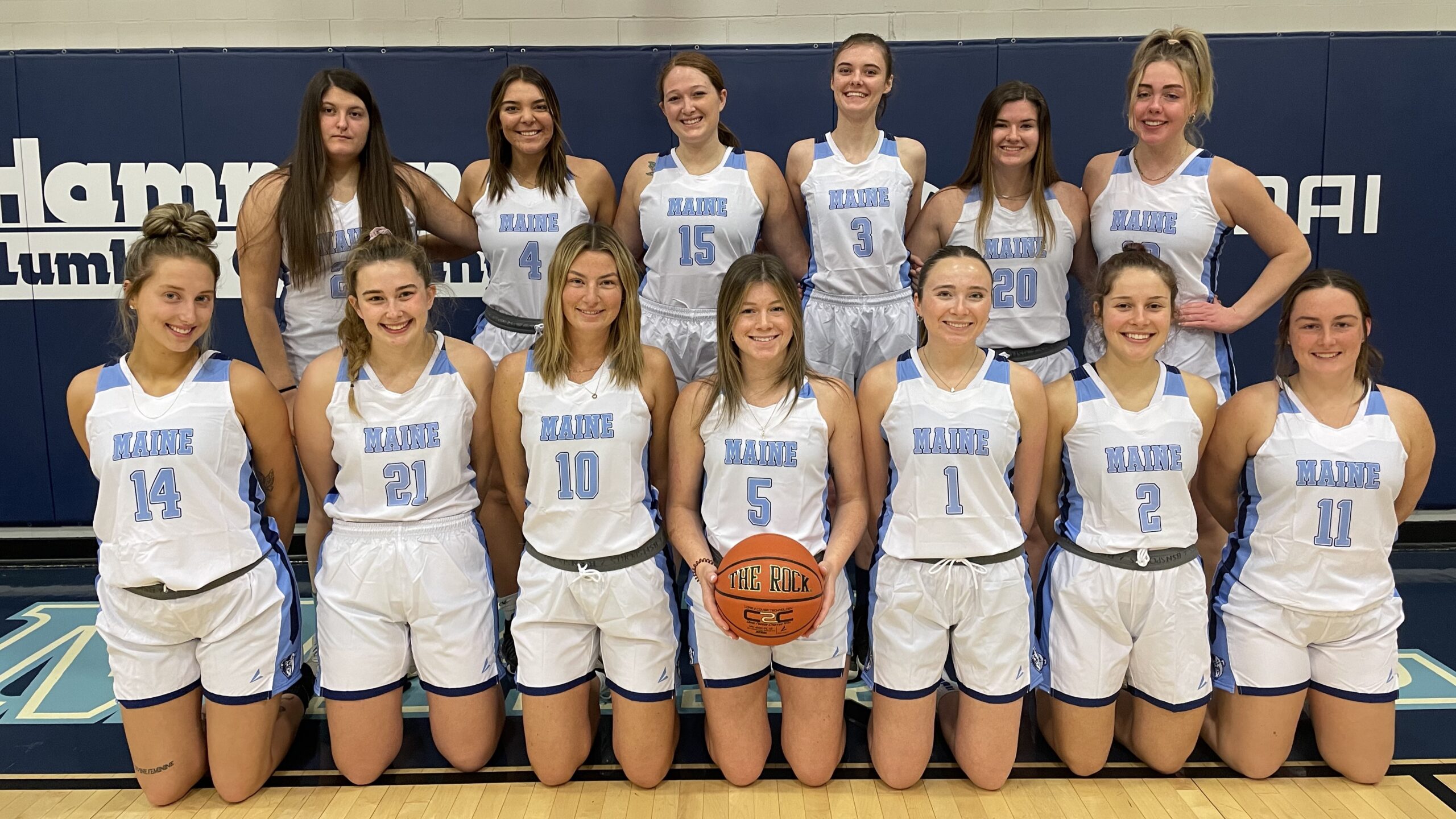When Olivia Bourque became president of the club women’s basketball team at the University of Maine, she was staring down a long to-do list.
There was a team to build, a schedule to make, practices to hold. But unlike NCAA-level teams, she had little staff support — it was mostly her team’s responsibility.
Club sports are increasingly popular at Maine colleges. They fit between the NCAA-level teams and the far less formal intramural teams. They get some financial help from their schools, but much of the work falls to the students themselves.
Women’s club basketball is new at the University of Maine in Orono, which has 28 club teams. The team spent the 2021-22 school year recruiting players, practicing and scrimmaging before joining the National Club Basketball Association for this season.
Maine has 19 players, with 15 allowed by league rules to suit up for a game.
Bourque has her hands full as club president. “I wasn’t sure if I could handle it at first, but then quickly learned it takes a village and the team was more than willing to help out where they could,” she said.
There is one notable distinction between club and intramural sports. Both are student-led, but club teams mostly compete against other schools and are more formal and competitive, aligning closer to varsity college teams.
Asked about the biggest challenge of starting a club sport from scratch, Bourque was blunt: everything.
“We didn’t know where to begin. When we did this there were several meetings about the do’s and don’ts, fundraising, other club sports (operations), volunteering, student government, money, traveling — this was the most overwhelming time of starting the club.”
That doesn’t even include the time commitment.
“You have to devote so much of your time to planning events, basketball games, volunteering and fundraising,” said Bourque. Over the past few months, she has better perfected the balancing act of time commitment and, as she describes, mixing serious competition with the fun of club sports.
“At the end of the day it is a club team and everyone is there to have fun, make friends and play basketball.”
An hour away at Colby College in Waterville, Jackie Ko is president of the women’s club rugby team, overseeing 35 regulars, with 25 allowed on a game-day roster. Sixteen of her players are freshmen, an unusual — but welcome — bump in newcomers.
Few players had any rugby experience and some had no athletic experience at all before joining the team — one of the 27 club teams at Colby. A handful had participated in sports such as basketball, hockey, soccer or track, and others were on competitive dance teams.
“Rugby is such a unique sport in that there is no true blueprint for success. No matter your background or experience, you can learn the sport and contribute to the team,” Ko said.

The administrative work is, likewise, Ko’s primary challenge, though rugby has been offered at Colby for years, first as a varsity sport, then as a club sport in recent years.
She and her vice president work alongside the college’s athletic department on budgeting and match logistics (travel, lodging and meals for road games, settling on a start time, and ensuring referees will be on hand for home games), with the event and facility departments to coordinate space for team meetings and matches, and with league and college officials to ensure all the necessary paperwork is submitted.
“All in all, it can be tough to stay on top of administrative tasks while also playing rugby and being a student,” said Ko.
Most of the fundraising to cover Colby’s $30,000 operational budget for the fall and spring rugby seasons comes through the Friends of Colby Rugby group, comprised largely of former players. The college provides a full-time athletic trainer, leaving travel and equipment expenses to fundraising by the team.
After a $2,500 contribution from its university to cover jerseys and basketballs, the UMaine team must fundraise $500 in the offseason — though it typically nets $600 to $800 — to cover travel.
Busy, but favorable, schedules
During the season, UMaine holds biweekly practices for two hours and sets aside an hour every Wednesday to volunteer with a local elementary school basketball program. Weekends contain a doubleheader series, at home or at Massachusetts opponents.
For Colby rugby, the in-season schedule consists of four or five practices weekly, depending on the weather, and includes Monday film study sessions to review how the team can improve off its latest weekend match.
Road games make for long days. The closest road game for Colby last fall was one hour to Bowdoin College in Brunswick. Its farthest was a five-hour jaunt to Middlebury College in Vermont, with other road games 2½ hours to Endicott College in Massachusetts and 3½ hours to Bryant University in Rhode Island.
The team left the afternoon or evening before road games, in rental vans this season because the trips were too far for its traditional carpooling. Since much of the roster hails from around New England, players stayed with their teammates’ relatives, except for their first two-day playoff experience, when they stayed in a hotel.
The UMaine team, meanwhile, typically departs Orono around 7 a.m. on game days for the doubleheader before returning that night. Each of its three road trips this season were roughly four hours, to Massachusetts. Occasionally the team adds a team-bonding component after a doubleheader.
Rugby’s offseason allows for about four to six weeks of recovery from the fall season before strength and conditioning starts for the spring. Captains hold practices early in the year until spring practices with coaches are able to begin outdoors.
“Because rugby is so physically demanding, the bonds that form between our team are incredibly strong,” said Ko. “I think that rugby provides the environment to grow our confidence, and develop physical and mental strength that we will have for the rest of our lives.”
The UMaine team offseason is balanced between practices, fundraising and community service, including programs for kindergarten and first-graders, and with the local YMCA.
So with all the administrative work — from fundraising to logistical — why step up?
“I wanted to do more for this team that continues to do so much for me, which is why I chose to play a part in leading the team,” said Ko.
For Bourque, her biggest fear was not having a strong turnout or support.
“They could have easily said it was chaotic and too difficult to keep up with, but I got extremely lucky to have these girls,” said Bourque. “They have had my back from the start. They are the reason the challenging moments weren’t all that bad and made it worth it.”
Which is what makes the chaos manageable.
“There is a sense of pride in saying, ‘I am the president of the women’s rugby team at Colby,’ ” Ko said. “I wanted to make others feel as inspired and connected to the team as I do.”
George Harvey is the multimedia editor for The Maine Monitor. Reach him by email: gro.r1755111105otino1755111105menia1755111105meht@1755111105egroe1755111105g1755111105.








